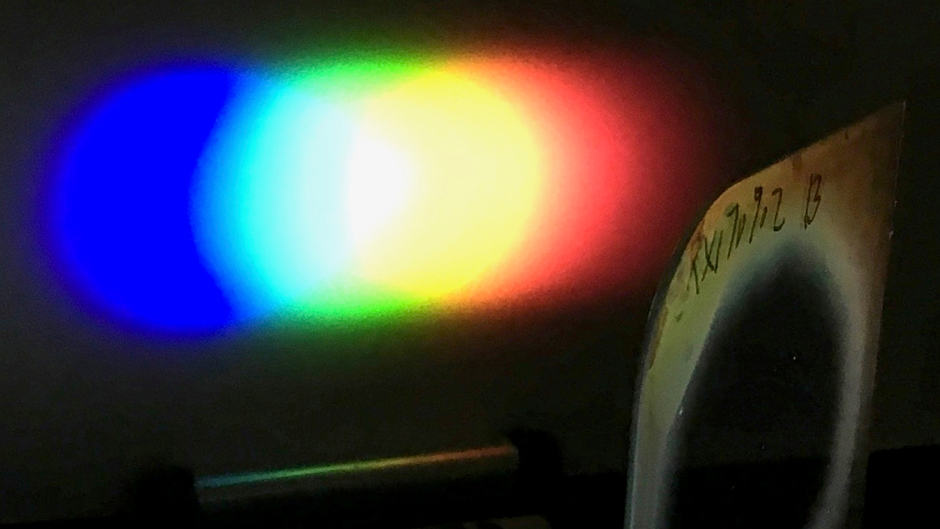Researchers have developed a light diffraction technology that allows for more light input and greater efficiency, an advance that could lead to more immersive augmented reality displays.

One-inch diameter Bragg polarisation diffraction grating bends white light from an LED flashlight onto a screen placed nearby (Photo: Michael Escuti, NC State)
Diffraction gratings are used to manipulate light in applications including from electronic displays and fibre-optic communication technologies. Until now, the most advanced examples of these optical components have had an angular acceptance range - or bandwidth - of about 20 degrees.
“Meaning that the light source has to be directed into the grating within an arc of 20 degrees," said Michael Escuti, a professor of electrical and computer engineering at North Carolina State University (NC State) and corresponding author of a paper on the work. "We've developed a new grating that expands that window to 40 degrees, allowing light to enter the grating from a wider range of input angles.
"The practical effect of this - in augmented-reality displays, for example - would be that users would have a greater field of view; the experience would be more immersive," said Escuti, who is also the chief science officer of ImagineOptix Corp, which funded the work and has licensed the technology.
The new diffraction grating is also more efficient, bending 75 per cent of the light in the desired direction compared to an average of 30 per cent in previous gratings in comparable configurations, said Xiao Xiang, a PhD student at NC State and lead author of the paper.
This advance could also make fibre-optic networks more energy efficient, the researchers claim.
According to NC State, the new diffraction grating achieves the advance in angular bandwidth by integrating two layers, which are superimposed in a way that allows their optical responses to work together. One layer contains molecules that are arranged at a "slant" that allows it to capture 20 degrees of angular bandwidth. The second layer is arranged at a different slant, which captures an adjacent 20 degrees of angular bandwidth.
The higher efficiency stems from a smoothly varying pattern in the orientation of the liquid crystal molecules in the grating. The pattern affects the phase of the light, which is the mechanism responsible for redirecting the light.
"The next step for this work is to take the advantages of these gratings and make a new generation of augmented reality hardware," Escuti said.
The paper, Bragg polarization gratings for wide angular bandwidth and high efficiency at steep deflection angles, is published in Scientific Reports. The paper was co-authored by Jihwan Kim, a research assistant professor of electrical and computer engineering at NC State.




Project to investigate hybrid approach to titanium manufacturing
Sadly they will not be ordering any more presses from Wilkins & Mitchell http://www.historywebsite.co.uk/articles/Darlaston/WM.htm